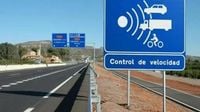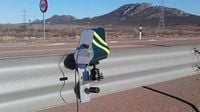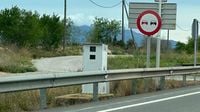The speed and accident rate on Spanish roads form a dangerous cocktail that continues to leave a mark each year as the risks become increasingly apparent. Unwarranted speeds contribute to 21% of fatal accidents, as reported by the General Directorate of Traffic (DGT), which has now intensified efforts to combat this blight. As part of the DGT's plan to enhance traffic safety, 17 new speed control radars have been activated across Spain, including nine fixed and eight section control devices as part of a broader objective to install a total of 122 new monitoring points throughout 2025.
These new radars, which went live on March 24, 2025, span across six autonomous communities: Castilla y León, Castilla-La Mancha, Comunidad Valenciana, Andalucía, Canarias, and Comunidad de Madrid. Notably, the installation of fixed radars over the past two decades has drastically reduced fatal accidents by 75%, according to Fernando Grande-Marlaska, Spain’s Minister of the Interior.
The newly installed radars include fixed units situated at specific points like LE-311 (km 11.250) in León, A-491 (km 4.350) in Cádiz, and A-49 (km 0.700) in Seville. In addition to fixed devices, there are numerous section control radars, such as those on the SA-20 (km 91.750 – 92.435) in Salamanca and the M-521 (from km 26.915 to 27.885) in Madrid.
As part of an initial month of operation, these radars will only notify drivers of speeding infractions through informative letters. After this grace period, however, penalties will be enforced on those caught exceeding the speed limits.
The DGT emphasizes that an increase in speed has direct implications for accident severity. Research conducted by Van den Berghe & Pelssers in 2020 indicates that even a minor increase of 10 km/h elevates the risk of fatal accidents by a staggering 220%. Similarly, data from Nilsson (2004) and Elvik (2009) supports that speeds as low as a 1 km/h rise can result in a 2-3% increase in the probability of severe accidents.
With these new devices, the DGT aims to tackle speeding, which is a critical factor in more than 20% of fatal accidents. To facilitate informed traveling, all radar locations are duly marked on roads, published on the DGT’s website, and made available for navigation systems.
This campaign heralds a proactive approach to road safety, as the statistics are sobering. According to the DGT, poor speed management necessitates serious consideration. “An increase of 10 km/h leads to a 220% increase in the risk of fatal accidents compared to the baseline risk,” the statement concluded.








